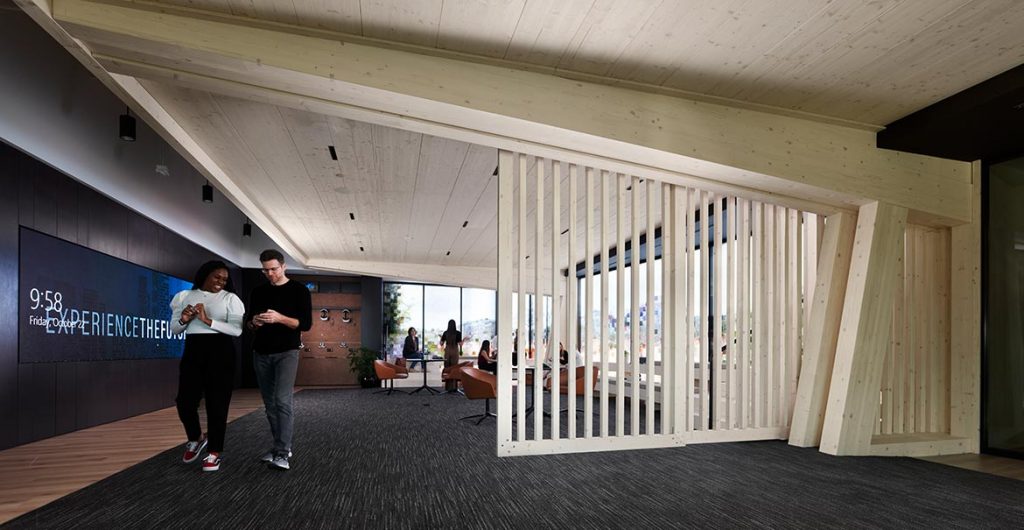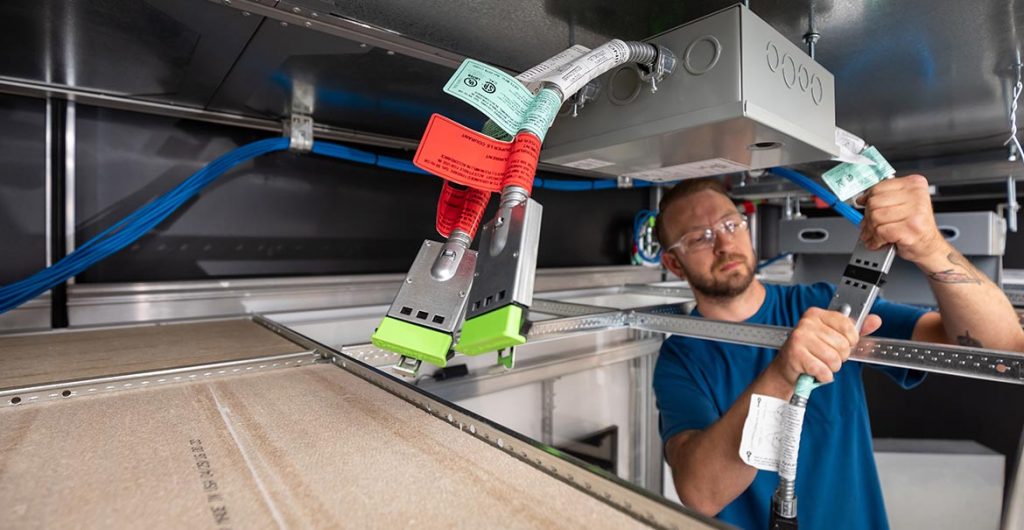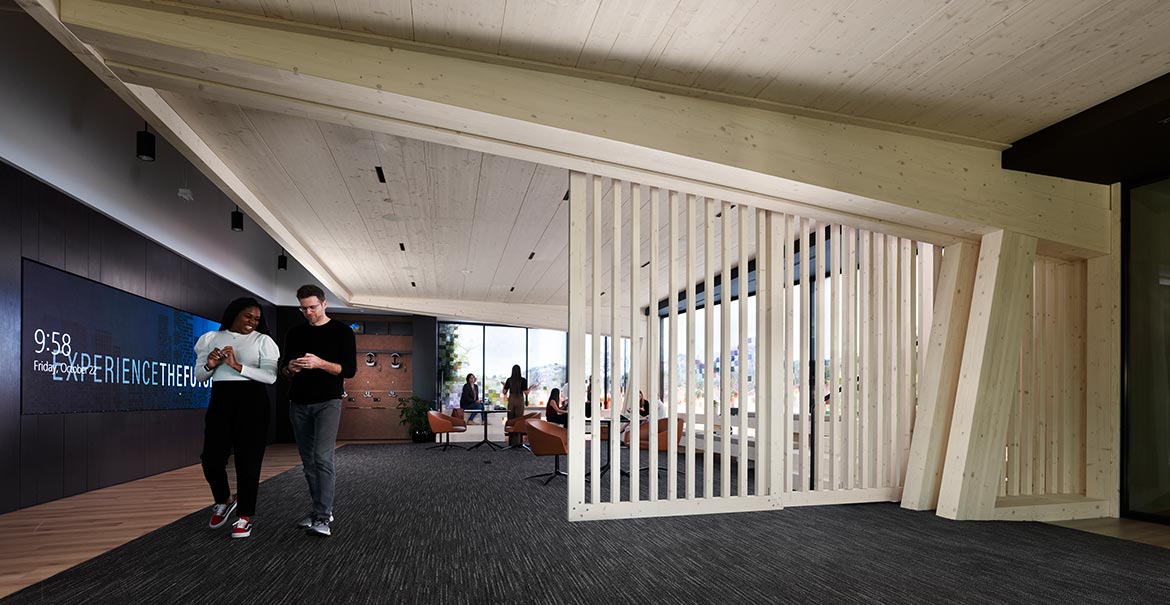
It’s a Monday morning in 2025.
Employees in cities across the U.S. are preparing to head to their reimagined office. Before they leave home, perhaps they’ll check on up-to-the-minute parking availability at their fully connected workplace, located in a smart building.
When they step out of the elevator, they’ll enter an office flooded with natural or warm light, windows you can open for fresh air and lots of greenery. Plus a dynamic mix of collaboration and conference rooms, as well as private workstations or booths — not to mention, access to health and wellness amenities.
And throughout the workplace, technology is seamlessly embedded everywhere.
JLL’s recently published Future of Work Survey 2022, explores forecasts like this one, evaluating hybrid work and office footprint expectations, as well as how companies plan to invest in future environmental, social and governance initiatives and workplace technology.
The report says the next three years, “represents a crucial window of opportunity that will determine how successful companies will be in adapting to rapid changes” affecting commercial real estate.
And while of course, no one can fully predict what the future of work holds, key insights offered up by the report can help organizations create adaptable spaces that not only meet the challenges provoked by rapid change — but create opportunities for enhanced performance as well.
Insight: It’s time to “double down on intelligent technology investments”
It’s not surprising that tech investments are a key priority for companies who want to optimize their workplace (45% of respondents to the JLL survey plan to accelerate their investment in tech).
But organizations need to establish a clear strategic roadmap for this process, cautions Amber Schiada, Head of Research, Americas, at JLL Work Dynamics and one of the authors of the report.
“You want to make sure that you’re measuring and making informed decisions and not just implementing a strategy that turns out that maybe that wasn’t the right way to go,” Schiada says.
Schiada says many companies are still in the testing phase of new tech rollouts. They’re figuring out the unique, specific needs of their teams, and then determining what sort of technologies will enable the productivity required.
According to the report, some of the most in-demand technologies that boost in-office performance are:
- Tools that support collaboration (40%).
- Workplace apps (36%).
- Management software for co-working and flexible spaces (29%).

Paul Garner, Market Segment Strategist at DIRTT, says investment in greater connectivity can help increase productivity. But he notes that new tech must be able to draw on expanded network capabilities — otherwise the benefits of these tools can’t be fully harnessed.
“As electrical and technology requirements expand, infrastructure supported by crucial cabling services is becoming more important,” says Garner.
He recommends companies upping their tech game also invest in adaptable, modular cabling services that can power the latest tech innovation, but also be easily updated in the future.
How infrastructure is deployed is key to enabling a connected workplace, says Garner.
Insight: Companies are investing in quality over quantity
Flexibility (namely hybrid work) isn’t a passing phase, says the report. But in-person work environments aren’t going anywhere. They’re just improving.
The report found 72% of organizations believe the office will remain central to their work ecosystem, and 77% say investing in quality office space is a greater priority than expanding their total footprint.
The reasoning goes something like this, says Schiada: “We want to make sure that we’re upgrading to better space or investing in the space itself so that ultimately, you’re attracting and retaining a workforce that wants to go to the office.”
She reiterates many companies are still in the pilot phase of figuring out exactly how to achieve this. But designing differentiated, quality spaces and a regenerative workplace overall supports the creation of office environments people are willing to commute to.
For instance, the report says 46% of CRE executives plan to accelerate investment in workplace designs that “improve employee engagement and well-being.” Tori Cnudde, Internal Design Lead at DIRTT, shares some current design trends that facilitate these space enhancements.
“People are realizing that layering of light is really important to create a feeling of warmth in a space,” she says. Lighting, customized finishes, and warmer materials, such as timber, are all in high demand right now.
Some companies are also turning to veneer or wood tones, as well as natural color palettes to create an atmosphere that’s more connected to nature to capitalize on the benefits of biophilic design.
Alternatively, other organizations prefer “a more futuristic, modern space that features eye-popping color,” says Cnudde.
That’s the whole point of customization. It allows brands to design a space that truly reflects who they are culturally, and create a sense of place that appeals to their employees.
Schiada echoes this sentiment. “There isn’t really a one size fits all. There isn’t one answer, but it certainly has been very clear that quality office spaces are in higher demand,” she says.
